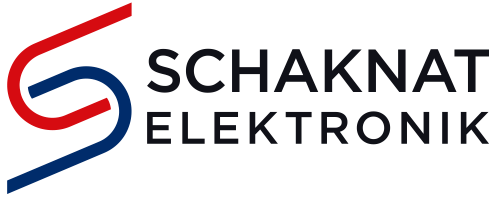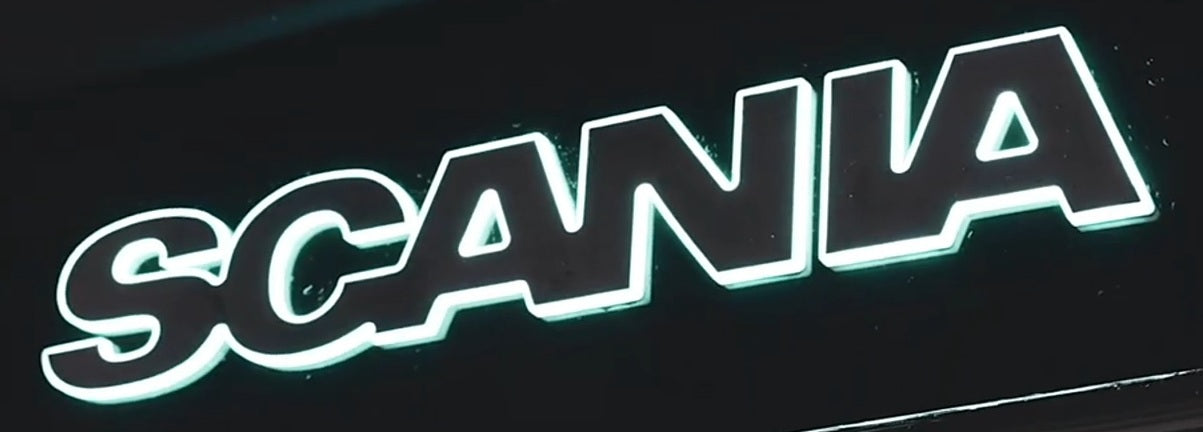Internationaler Hinweis zur Verwendung und Einhaltung von Rechtsvorschriften
1 Einleitung
Schaknat entwickelt Technologien, die Enthusiasten und Profis dabei helfen, Fahrzeuge mit Sorgfalt und Präzision zu kalibrieren. Da die rechtliche Behandlung von Fahrzeugtuning in den einzelnen Ländern und Regionen sehr unterschiedlich ist, ist es wichtig, vor der Installation oder dem Betrieb eines Schaknat zu verstehen, wie sich diese Unterschiede auf die rechtmäßige Verwendung auswirken. Dieser Hinweis erläutert den rechtlichen Kontext, die Verantwortlichkeiten von Nutzern und Einbaubetrieben sowie das kontinuierliche Engagement von Schaknatfür Sicherheit, Umweltverantwortung und Transparenz.
2 Anwendungsbereich
Dieser Hinweis gilt für alle Schaknat und -Software, einschließlich des Schaknat , der Schaknat , der zugehörigen Firmware, Kalibrierungsdateien und Zubehör, sowie für Produkte, die über autorisierte Partner oder Integratoren vertrieben werden und die Schaknat enthalten. Es ist für jeden Markt gedacht, in dem Schaknat angeboten oder unterstützt werden.
3 In dieser Bekanntmachung verwendete Definitionen
Der Klarheit halber bedeutet Off-Road den Betrieb abseits öffentlicher Straßen, wo die Verkehrsgesetze nicht gelten. Wettbewerb bedeutet sanktionierte Renn- oder Motorsportaktivitäten nach den Regeln eines entsprechenden Dachverbandes. Geschlossene Rennstrecke bedeutet private Rennstrecken, Testgelände oder kontrollierte Testeinrichtungen, die nicht für den öffentlichen Verkehr geöffnet sind. Öffentliche Straße ist jede Straße, jeder Weg oder jede Autobahn, die nach den Gesetzen des jeweiligen Landes für den allgemeinen Verkehr freigegeben ist. Zertifizierung oder Zulassung bedeutet eine formelle Genehmigung durch eine zuständige Behörde, die die Benutzung auf der Straße unter bestimmten Bedingungen in einem bestimmten Rechtsgebiet erlaubt.
4 Regulatorische Landschaft im Überblick
Fahrzeugumbauten und Motorkalibrierungen unterliegen möglicherweise Gesetzen, die sich mit Emissionen, Typgenehmigung, Lärm, Sicherheitssystemen, Zulassung und Versicherung befassen. Die geltenden Vorschriften sind je nach Rechtsordnung unterschiedlich. In der Europäischen Union unterliegen Kraftfahrzeuge und viele Bauteile einer Typgenehmigungs- und Marktüberwachungsregelung. Im Vereinigten Königreich gilt ein nationales Typgenehmigungssystem mit der Vehicle Certification Agency als Genehmigungsbehörde. In den Vereinigten Staaten gilt ein landesweites Verbot der Manipulation von Emissionen, und einige Bundesstaaten verlangen teilespezifische Ausnahmen für die Verwendung im Straßenverkehr. Andere Länder wenden ihre eigenen Regelungen an, z. B. die australischen Konstruktionsvorschriften, die kanadischen Bundesvorschriften für Straßenfahrzeuge und Motoren, das japanische MLIT-System zur Einhaltung der Vorschriften für Fahrzeuge und die neuseeländische Zertifizierung von Fahrzeugen mit geringen Stückzahlen für bestimmte Änderungen. Diese Systeme sind häufig an die im Rahmen von WP.29 angenommenen Fahrzeugvorschriften der Vereinten Nationen angeglichen oder verweisen auf diese. In der Praxis bedeutet dies, dass ein und dieselbe Änderung an einem Ort rechtmäßig und an einem anderen Ort eingeschränkt sein kann, und dass die rechtmäßige Nutzung auf der Straße häufig den Nachweis der Einhaltung der Vorschriften durch eine Behörde erfordert. UNECE+9EUR-Lex+9Gesetzgebung.gov.uk+9
5 Kernaussage zur Einhaltung der Vorschriften
Sofern in den offiziellen Unterlagen für einen bestimmten Markt nicht ausdrücklich anders angegeben, werden Schaknat nicht für die Einhaltung bestimmter nationaler oder regionaler Straßenbenutzungs- oder Emissionsvorschriften entwickelt, vermarktet oder zertifiziert. Der Einbau oder die Verwendung kann das Emissionsverhalten, die Leistungsmerkmale oder den Typgenehmigungsstatus eines Fahrzeugs verändern und sich auf die Zulassung, Inspektion oder Versicherung nach lokalem Recht auswirken.
6 Verwendungszweck und vorübergehende Beschränkungen
Bis zum Erhalt der entsprechenden Genehmigungen oder Zertifizierungen sind die Produkte Schaknat nur für Verwendungszwecke bestimmt, die nach den örtlichen Gesetzen außerhalb des allgemeinen öffentlichen Straßenbetriebs zulässig sind. Zu den typischen zulässigen Verwendungszwecken gehören der Betrieb im Gelände, sanktionierte Wettbewerbe, Tests auf geschlossenen Strecken, Forschung und Entwicklung, der Einsatz in der Ausbildung und Vorführungen in kontrollierten Umgebungen. Der Betrieb auf der Straße kann eingeschränkt oder verboten sein, bis eine zuständige Behörde die Einhaltung der Vorschriften für die jeweilige Fahrzeugkonfiguration bestätigt.
7 Verantwortlichkeiten von Eigentümern, Betreibern und Installateuren
Es liegt in der alleinigen Verantwortung des Eigentümers, Betreibers oder Installateurs, festzustellen, ob der Einbau und die Nutzung am Einsatzort rechtmäßig sind. Vor der Installation oder dem Betrieb sollte sich der Benutzer vergewissern, ob die örtlichen Gesetze eine technische Inspektion, eine Emissionsprüfung, eine Änderungsgenehmigung oder eine Dokumentation vorschreiben, und er sollte sich über etwaige Auswirkungen auf die Registrierung, Inspektion und Versicherung im Klaren sein. Mit dem Kauf, der Installation oder der Verwendung eines Schaknat übernimmt der Benutzer die volle Verantwortung für die Einhaltung der Gesetze in seinem Land.
8 Nutzung der Schaknat App und digitale Kalibrierungen
Alle Funktionen, die über die Schaknat ausgeführt werden, einschließlich des Lesens, Schreibens oder Einstellens von Kalibrierungen, unterliegen denselben rechtlichen Verpflichtungen wie die Hardware-Installation. Benutzer dürfen Fahrzeuge nicht so konfigurieren, dass Abgasreinigungsanlagen, On-Board-Diagnose- oder Bereitschaftssysteme umgangen oder außer Betrieb gesetzt werden, wenn solche Handlungen gesetzlich verboten sind. Benutzer sollten Aufzeichnungen über installierte Kalibrierungen und Fahrzeugkonfigurationen aufbewahren, wenn die örtlichen Behörden eine Dokumentation erlauben oder verlangen. Wenn eine Kalibrierung als "Track", "Off-Road" oder "Competition" gekennzeichnet ist, darf sie nur in den gesetzlich zulässigen Zusammenhängen verwendet werden.
9 Sicherheit, Umweltverantwortung und bewährte Verfahren
Der Schaknat Dongle und die App bieten eine sichere Schnittstelle für die Anwendung von Kalibrierungen und die Durchführung von Diagnosen. Änderungen an der Motorsteuerungssoftware können sich auf Emissionen, Kraftstoffverbrauch und andere regulierte Parameter auswirken, und die Richtung und das Ausmaß solcher Auswirkungen können ohne entsprechende Tests nicht garantiert werden. Schaknat stellt keine Funktionen zur Umgehung, Deaktivierung oder anderweitigen Umgehung gesetzlich vorgeschriebener Emissionskontroll-, Diagnose- oder Bereitschaftssysteme bereit. Der Benutzer muss sicherstellen, dass alle angewandten Kalibrierungen mit den geltenden lokalen, regionalen und nationalen Gesetzen übereinstimmen und, falls erforderlich, vor dem Betrieb auf der Straße eine Emissionsprüfung, Inspektion oder Zertifizierung von den zuständigen Behörden erhalten. Schaknat arbeitet mit den Behörden zusammen und stellt auf Anfrage technische Informationen zur Verfügung. Die rechtliche Verantwortung für die Einhaltung der Vorschriften und die Einholung der erforderlichen Genehmigungen liegt jedoch beim Eigentümer oder Betreiber des Fahrzeugs.
10 Teile, Software und Integrationen von Drittanbietern
Die Konformität des Fahrzeugs wird durch die Kombination von Komponenten und Software im Fahrzeug beeinflusst. Wenn Schaknat zusammen mit Teilen oder Kalibrierungen von Drittanbietern verwendet werden, ist der Benutzer für die Überprüfung der kombinierten Konfiguration verantwortlich. Jede von einem Dritten gemachte Konformitätsaussage gilt nur für die von diesem Dritten gemachten Angaben und nur innerhalb des von ihm angegebenen Bereichs. Schaknat gibt keine Zusicherungen hinsichtlich der Straßenzulassung von kombinierten Konfigurationen ab, es sei denn, dies ist für einen bestimmten Markt ausdrücklich dokumentiert.
11 Vertretungen im Straßenverkehr
Schaknat und seine autorisierten Partner geben keine Zusicherung, dass ein Produkt oder eine Kalibrierung für den Betrieb im öffentlichen Straßenverkehr in einer bestimmten Rechtsordnung zugelassen, zertifiziert oder rechtmäßig ist, es sei denn, dies ist ausdrücklich in den offiziellen Unterlagen oder der Zertifizierung für diese Rechtsordnung angegeben. Der rechtliche Status von Fahrzeugmodifikationen wird von den zuständigen Behörden nach lokalem Recht festgelegt.
12 Länder- und regionalspezifische Hinweise zur Orientierung
Diese Hinweise dienen lediglich der allgemeinen Orientierung, damit die Benutzer verstehen, warum eine Überprüfung vor Ort erforderlich ist. Sie sind nicht erschöpfend und ersetzen nicht die Beratung durch die örtlichen Behörden. In der Europäischen Union können sich Änderungen, die sich auf Emissionen, Geräusche oder Leistung auswirken, auf den Typgenehmigungsstatus des Fahrzeugs auswirken und erfordern unter Umständen eine Einzelprüfung oder -genehmigung vor der Verwendung im Straßenverkehr. Im Vereinigten Königreich gilt die nationale Typgenehmigung, und Änderungen am Fahrzeug, die sich auf regulierte Systeme auswirken, können eine Inspektion oder Genehmigung erfordern, um die Straßenzulassung zu behalten. In den Vereinigten Staaten verbietet das Bundesgesetz die Manipulation von Abgasreinigungsanlagen und verbietet die Herstellung, den Verkauf oder den Einbau von Vorrichtungen, die diese Anlagen umgehen, für Fahrzeuge, die im öffentlichen Straßenverkehr eingesetzt werden, während in Kalifornien und einigen anderen Bundesstaaten teilespezifische Anordnungen erforderlich sind, um nachzuweisen, dass eine Änderung die Emissionen nicht erhöht. In Australien legen die ADRs nationale Sicherheits- und Emissionsnormen fest, und die Verwendung auf der Straße hängt von der Einhaltung der Vorschriften ab, die auf dem Markt angeboten werden, sowie gegebenenfalls von den staatlichen Anforderungen für Änderungen. In Kanada legen Bundesvorschriften Emissionsstandards für Straßenfahrzeuge und Motoren fest, und die Provinzen können Inspektionsprogramme durchführen, die mit diesen Vorschriften in Wechselwirkung stehen. In Japan überwacht MLIT die Typgenehmigung und die Einhaltung der Vorschriften im Betrieb, und nicht genehmigte Modifikationen können die rechtmäßige Straßenzulassung beeinträchtigen. In Neuseeland ist für bestimmte Modifikationen eine Low Volume Vehicle-Zertifizierung erforderlich, um eine Eignungsbescheinigung zu erhalten oder aufrechtzuerhalten. Benutzer sollten sich vor dem Betrieb auf der Straße stets bei der zuständigen Behörde über den aktuellen Stand informieren. NZ Transport Agency+8EUR-Lex+8Gesetzgebung.gov.uk+8
13 Zusammenarbeit mit Behörden und Zertifizierungsbemühungen
Schaknat unterstützt die rechtmäßige Nutzung und arbeitet mit anerkannten Prüflabors und zuständigen Behörden zusammen, um Zulassungen oder Zertifizierungen zu erhalten, die die Nutzung auf der Straße in ausgewählten Märkten ermöglichen können. Sobald Zertifizierungen verfügbar sind, wird in den Produktunterlagen und in den In-App-Hinweisen angegeben, welche spezifischen Gerichtsbarkeiten und Konfigurationen abgedeckt sind.
14 Begrenzung der Haftung
Schaknat, seine Tochtergesellschaften, Mitarbeiter und Händler haften nicht für Verluste, Strafen oder Schäden, die sich aus dem Einbau oder der Verwendung der Produkte in einer Weise ergeben, die nicht mit diesem Hinweis übereinstimmt oder gegen örtliche Gesetze verstößt, soweit dies gesetzlich zulässig ist. Dies gilt auch für Folgen wie nicht bestandene Inspektionen, Verlust der Zulassung, Vollstreckungsmaßnahmen oder andere Folgen, die auf eine nicht genehmigte Verwendung im Straßenverkehr zurückzuführen sind.
15 Aktualisierungen und Zugriff auf die neueste Version
Da sich die Fahrzeug- und Emissionsvorschriften weiterentwickeln, kann dieser Hinweis in regelmäßigen Abständen aktualisiert werden. Die aktuellste Version ist immer auf dem Schaknat Legal Blog unter International Sales and Legal Use Disclaimer verfügbar. Schauen Sie auf dieser Seite nach dem aktuellen Text, anstatt sich auf Kopien zu verlassen.
16 Sprache
Diese Seite ist aus Gründen der internationalen Lesbarkeit auf Englisch verfasst. Übersetzungen können der Einfachheit halber bereitgestellt werden. Im Falle von Unstimmigkeiten sollte die englische Version zur Auslegung dieser Mitteilung herangezogen werden, es sei denn, das örtliche Recht schreibt etwas anderes vor.
17 Hinweis zur Rechtsberatung
Dieser Hinweis dient der allgemeinen Information über die rechtmäßige Verwendung und die Verantwortung für die Einhaltung der Vorschriften. Er ist kein Ersatz für die Beratung durch einen qualifizierten Fachmann oder für die Beratung durch die zuständigen Behörden am Einsatzort.
18 Versionskontrolle
Aktualisiert am 18. Oktober 2025. Referenzcode Schaknat.

